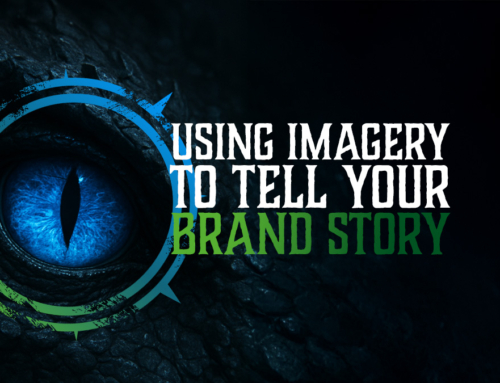I’ve always had an odd relationship with risk. As someone who plays a lot of strategic games, I like to think that I’ve got a sense for weighing up outcomes and probability. I’ve got a fairly impressive win rate when it comes to board games and wargames (much to the annoyance of my friends), which stems from a deep understanding of game design and a mind that enjoys complex plans.
And many times, my strategies are risky. But they’re always grounded in a sense of strategic focus.
Yes, they’re hardly life or death, but there’s a bit of a rush when you put a risky plan into action. There’s a Tolkien quote I (unsurprisingly) like when I think of risk:
‘It’s a dangerous business, Frodo, going out your door. You step onto the road, and if you don’t keep your feet, there’s no knowing where you might be swept off to.’
So it’s little wonder that my approach is similar in business. My apparent, sudden leap into self-employment was actually precluded by months of quiet planning and research. It’s all about keeping your feet.
Risk invites reward, and it’s the same in branding.
For small businesses, standing out can feel like a significant risk. It feels more comfortable to play it safe and go with the crowd. Paradoxically, this is more dangerous. Branding is the path to being memorable, valued and able to charge your worth.
And to stand out, you first have to put yourself in harm’s way.
Here’s how to take risks in branding that pay off.
Understanding your fears – what if my branding risks don’t pay off?
Evolutionarily speaking, fear is a useful emotion. It’s what keeps us safe from harm. But like anything, too much can be bad. It also prevents us from growing and from reaching our potential. Yes, it’s comfortable, but that same comfort can keep us small.
And that’s not what you want your brand to be.
As I see it, there are three common fears that business owners face when it comes to brand.
Fear of losing existing customers
There’s a worry that your loyal base won’t recognise you, feel alienated, or go elsewhere. It’s scary to imagine losing your hard-won clients because they don’t like changes to your brand.
Fear of negative backlash
Sometimes people don’t like change. It can be scary and uncomfortable. What if people don’t like it? People can react in scary and unpredictable ways when faced with change. You can feel exposed or attacked by negative feedback.
Fear of financial loss
Branding costs time, money and your emotional energy. These costs can feel huge and obscure your view of the gains you will make. What if it doesn’t work and you’ve wasted all that money?
Sound familiar?
They should, because EVERY business that grows has felt these fears before. Fear is a sign you’re pushing boundaries and ready to change. It feels uncomfortable because the primal sense is alerting you to the danger of risks.
It’s not a question of IF you’ll feel fear, but HOW you’ll respond to it.
Many people shrink back when it’s time to take risks, and the moment you stop growing is when your business starts going backwards. Taking calculated risks in your brand at this point feels unnatural, but it is actually the perfect time to do it.
The benefits of taking branding risks
Your branding is a great place to take risks, as the potential benefits are massive. Your brand is what people think and feel about you, and if you can elevate this impression, it becomes easier to trust you. Getting this right guarantees awareness and sales through a host of benefits.
Unique branding demands attention
Bold brands break through the noise. If your brand blends in with everyone else, how will it be chosen? When everyone in your niche looks and sounds the same, it’s an opportunity for you to be different. Unique branding helps show how you’re different and makes you more memorable.
Both of these are factors in customer decision-making. You can’t buy from someone you can’t pick out in a crowd or fail to remember hours later.
Build stronger connections with customers
Vulnerability fosters authentic connection. When you’re brave enough to show who you are, it builds trust. Your values and beliefs don’t just make you different from your competitors; they attract people who are aligned with your vision. People remember brands that feel human.
On that point, people engage with storytelling. How you overcame challenges and what you stand for build a narrative that creates loyalty. Storytelling gives customers a reason to support you that is far more compelling than generic promises.
Potential for increased revenue
Taking risks can open new paths. New demographics, channels and opportunities only open up once you leave yourself open to them. If you’re stuck in the same actions, you’re always going to get the same response.
A clearly defined brand is also more valuable. Customers are happy to pay more for a brand that feels premium or focused on their needs. When you can see your brand’s value, it’s easier to find clients that match.
None of these benefits can be reached without taking risks. But risks don’t need to be dangerous. With a bit of thought, you can identify risks that are more likely to play out in your favour.
Identifying safe branding risks to take
While there is never a 100% ‘safe’ risk (then it wouldn’t be a risk), there are things you can do to spot more viable paths. Especially for your branding. While ‘brand’ has a reputation as being ‘murky’ (I’ve heard it called both ‘sorcery’ and ‘bullshit’, sometimes in the same day), there is clear science behind it. Knowing what you’re doing and clear planning help mitigate risks.
Research to win
The best way to minimise risk is to conduct market research. The more you know about the surroundings, the easier it is to avoid pitfalls. Understanding customer pain points and preferences helps you align with their needs and wants. Talk to existing customers about what they like and what you could improve. Ask clients who almost bought what turned them off at the last minute. All of this helps you develop visuals and language that speak to your audience.
While analysing your market, you should also look at your competitors. What are they doing well, and where are the gaps? What feels stale, safe or overdone in your industry? If everyone in your niche leans into muted tones or a formal character, is there a way you can safely move into something more expressive?
Research helps make your strategies more viable. The more you know, the more you can plan for.
Testing concepts on a smaller scale
Smaller risks might have less impact, but they can be used as tests before jumping in with a big change. Trialling new brand elements on a smaller scale can help you test the waters. How does your audience respond to a new logo or visual style? Testing on a microsite or single campaign can give insights into how a wider rebrand might be received.
User testing and online surveys can be used to gather feedback before a full rollout. Honest feedback is vital, so be bold with your questions. Ask what feels off and what is disliked to make changes before fully investing.
The key to identifying ‘safe’ risks lies in strategic thinking. While diving straight in is a more exciting notion, working with someone who knows what they’re doing will offer bigger rewards.
Define what you want to achieve
There’s no point in jumping if you don’t have a clue where you’re going to land. If your aims are ambiguous, your results will be too. Are you aiming for more clients, higher prices or even both? Do you want to change audience perception?
Clear goals mean risks are based on strategy and not faith. It’s easier to make measurable steps when you have something you’re aiming for.
And remember, risk is essentially a muscle. The more you exercise it, the easier the movement becomes. Embracing small risks helps you grow and builds your confidence. The more confident you get in your brand, the easier you’ll find marketing it.
Real Brands that took risks – and succeeded
Confidence and clarity help business owners overcome risks, especially those associated with branding. Here’s how some of my clients let go of their fear and took risks that paid off.
Transcribe: A thoughtful refresh, not a risky overhaul
After 15 years with the same logo, TranScribe was overdue for a change. Their logo had served them well, but was seriously outdated. Instead of discarding everything, we chose a balanced approach: retain recognition while modernising.
Together, we updated the silhouette, switched to modern typography, and introduced a new blue and orange palette. The refresh elicited positive feedback from clients and gave the brand renewed visual interest, especially in event and print settings.
Darmax Research: Authority from the ground up
Darmax had early success but lacked a unified brand. We worked together through discovery workshops to uncover their core strengths, then built a cohesive brand identity. Logo, visual language, brochures, stationery, and supporting graphic elements all had to be built from the ground up.
Darmax leaned into the “Sage” archetype to communicate trust, knowledge, and gravitas. This helped give the brand a voice it never had before, which resonated with its academic audience. Darmax now presents as a confident, credible brand, rather than a collection of ad-hoc materials and attracts larger clients with bigger budgets.
Conclusion – The Risk was inside us all along
I love bold branding. But bold doesn’t mean reckless. Bold just shows you’re willing to stand out, and you can do that thoughtfully. Taking considered risks can help you be seen, heard and most importantly, remembered. The bravery to stand out has a host of benefits, increasing customer loyalty, trust and ultimately, revenue.
Taking the risk to be bold helps differentiate you in crowded markets and reveals paths you didn’t know existed.
Every time a business works on its branding, it’s a risk. Yes, it’s uncomfortable. Yes, some people will hate it. But those who are brave enough are the ones who reap the rewards. Those who blend in risk something far more dangerous. Obscurity.
It’s more of a risk NOT to work on your branding. You don’t need to rebrand everything overnight, though. Small, measured steps and feedback loops can help orient your position before you build momentum.
The real risk to your brand isn’t being different, it’s being the same as everyone else.
If you’re feeling scared of the risks involved in building a bold brand, I’ve got just the thing for you. Join a community of small business owners where you can test ideas, get feedback, and feel less alone.
Best part is, there’s no risk. It’s absolutely free to join.
Click below to find out more about Brand Nexus






